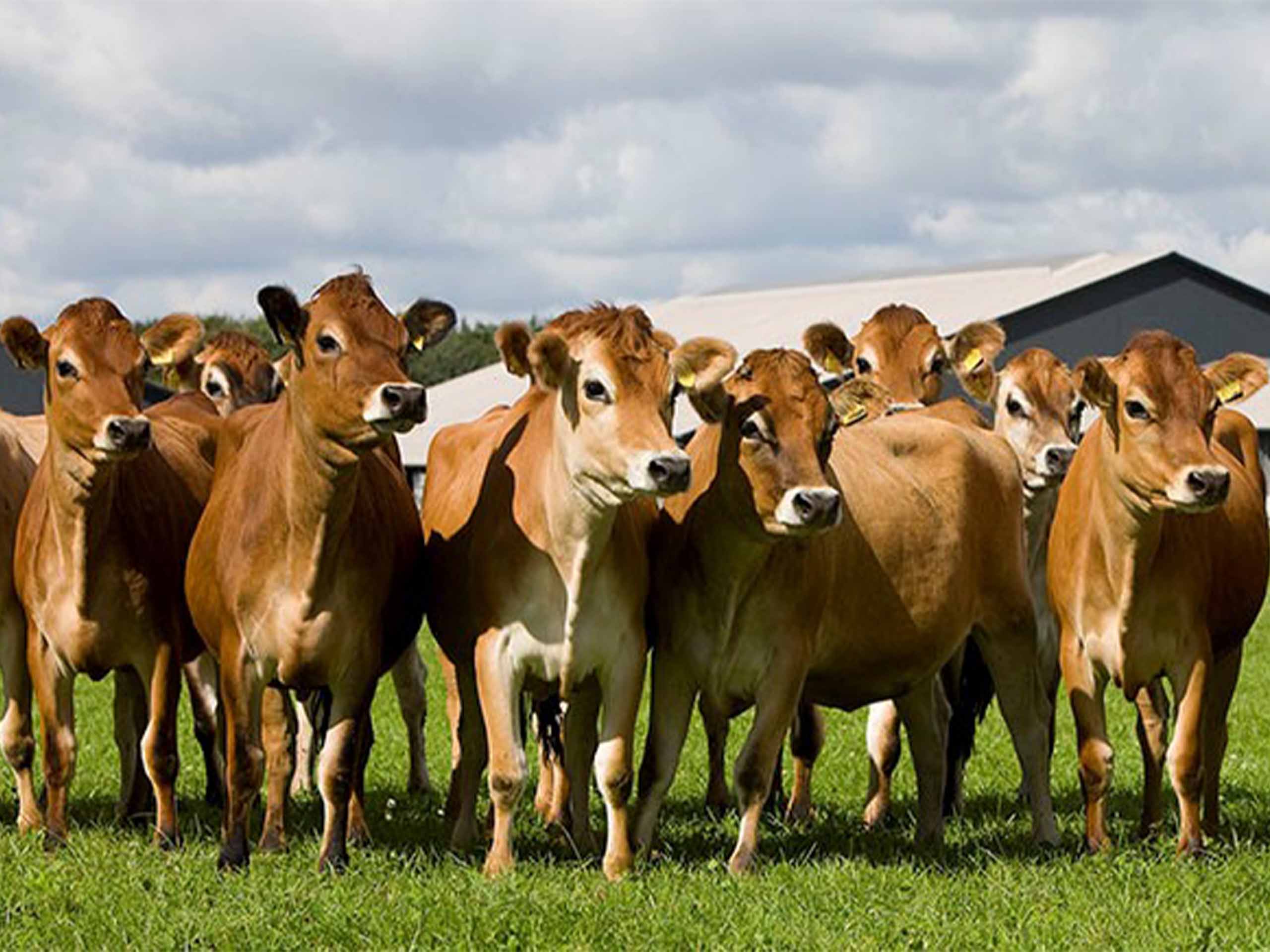MONTBELIARDE
Montbéliarde cattle originate from France and are primarily known for their dairy production, with their milk often transformed into cheese.
The breed descends from Bernoise cattle but has evolved into a distinct breed over time. Originally referred to as Alsatian cattle, they were renamed Montbéliarde after the Montbéliard region of France in the 1800s.
Montbéliarde cattle are characterized by their striking red-and-white pied coloration, typically featuring a predominantly white face. Their feet and skin, particularly around sensitive areas such as the udders, are notably tough.
While they may not match the Holstein Friesians in terms of milking volume, Montbéliardes excel in beef qualities, often surpassing Holsteins. Some modern Montbéliarde cattle show traces of Red Holstein due to crossbreeding in the 1970s.
As a relatively large continental breed, Montbéliarde cows can weigh nearly 700 kg, while bulls can reach weights of up to 1,200 kg. The breed is naturally horned, which may pose a challenge for some farmers. To avoid the stress and effort of dehorning, breeding polled cattle can be a worthwhile consideration.
Their temperament has been described as challenging by some farmers, as they may be flighty and more difficult to milk in certain cases. However, isolated incidents should not define the breed as a whole, so it’s important to assess individual animals fairly. Extra caution is always necessary with bulls, regardless of breed—see our article on Bull Safety for more tips on maintaining safety.
Montbéliarde cattle are well-adapted to varying conditions in their native French region, making them resilient in the stable Irish climate, which lacks extreme temperature fluctuations.
These cattle tend to have long and fertile lives, reducing herd replacement costs and resulting in more calves for farmers. They also achieve high conception rates through artificial insemination.
Notably, Montbéliarde cows typically have around 24% more lactations compared to similar breeds, averaging about five additional lactations per cow. Their robust udders contribute to high resistance to mastitis, making them an appealing choice for farmers aiming to maintain a healthy and productive herd.
The calving process in Montbéliarde cattle is generally smooth, especially when crossed with Charolais. However, calves resulting from Montbéliarde/Holstein matings tend to have heavier birth weights, which may increase the risk of complications in some instances.
Montbéliarde milk is highly regarded, often used in popular cheeses such as Emmental and Gruyère. Its high protein content of 3.45% and the frequent presence of the kappa casein BB variant make it particularly suitable for cheesemaking, resulting in higher cheese yields. On average, a Montbéliarde cow produces over 6,000 kg of milk per lactation.
The breed’s success in crossbreeding programs is noteworthy. Holsteins crossed with Montbéliarde cattle tend to live longer and exhibit greater fertility, while these crosses also yield higher milk production than pure Montbéliardes.
In terms of beef quality, Montbéliarde cattle are considered excellent due to their low excess body fat. Bulls are typically slaughtered at weights up to 570 kg, with dressing percentages around 57%. Additionally, bull calves and cull cows from the Montbéliarde breed often have higher market values compared to their counterparts, including Holsteins.










